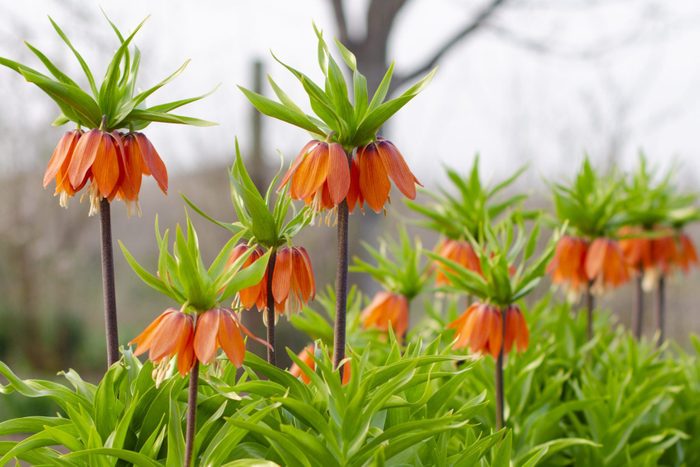
Crown Imperial Fritillaria
If you struggle with deer and rabbits but want beautiful spring flowering bulbs, try crown imperial fritillaria. This three-to-four-foot-tall stately flower acts as a pest repellent due to its distinct odor. You won’t notice it unless you sniff it up close, but critters know to stay clear.
Plant crown imperial bulbs in the fall in well-drained soil in a sunny spot. You’ll enjoy their elegant blooms every year in mid-spring as they return reliably in USDA Plant Hardiness Zones 5 through 8. Try tucking the bulbs behind a short boxwood or lavender hedge, then watch their tall stalks rise up and bloom just above the hedge.
Like all spring bulbs, the foliage will go dormant by summertime. Plant them near something that will fill in when the bulbs are finished.
Editor’s Tip: A small plant budget can go a long way toward increasing your home’s attractiveness. So if you’re looking to enhance your surroundings to attract potential buyers, try these 5 ways that plant can help you sell your house.
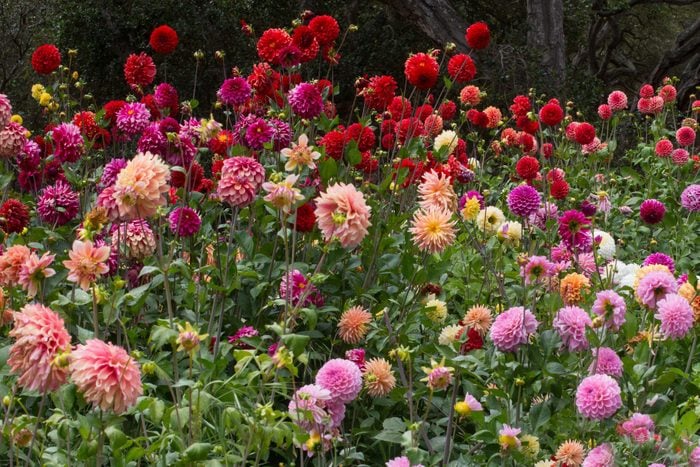
Dahlias
Dahlias are arguably some of the most beautiful flowers in the world. Once you grow your first one, you’ll want to add more to your garden every year.
Look for dinnerplate, cactus and ball-type dahlias, which are especially showy and bloom on tall stalks — great for cutting. They’re the stars of the garden from late summer to frost, blooming in nearly every color of the rainbow. You’ll find a limited selection at local garden centers, and hundreds of cultivars from mail order companies like Swan Island Dahlias and Longfield Gardens.
Plant dahlias bulbs in the springtime in full sun location after the risk of frost has passed. If you live in USDA Zones 8 through 10, you can leave the bulbs in the ground in the wintertime. In a colder climate, you’ll need to dig and store them for winter, then replant the following spring. If overwintered properly, they will live for many years.
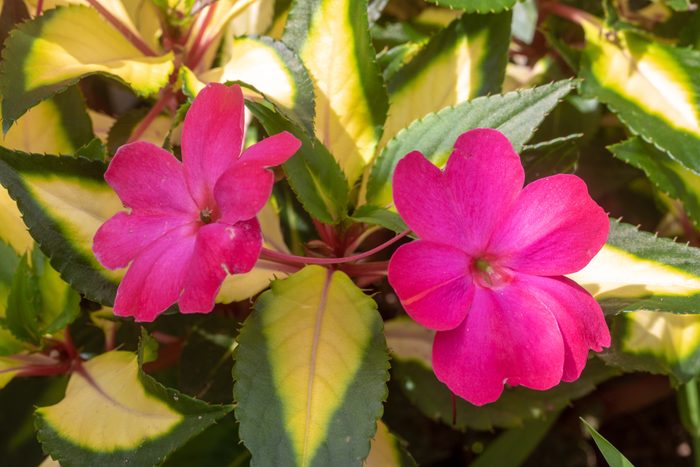
SunPatiens Impatiens
A show-stopping type of flower for borders, these fast-growing, heat-loving annuals form neat mounds of deep green foliage smothered in large, brilliant blooms. Look for shades of pink, purple, red, coral, magenta and white. Some varieties, like Compact Tropical Rose (shown here), offer extra-showy variegated leaves that add a splash of yellow to the mix.
As their name implies, SunPatiens thrive in all-day sun but also bloom well in part-sun. They thrive in humidity and enjoy nutrient-rich soil that stays moist. Cold temperatures can stunt their growth so don’t plant them too early. Although downy mildew is a serious concern with bedding impatiens, it doesn’t infect SunPatiens.
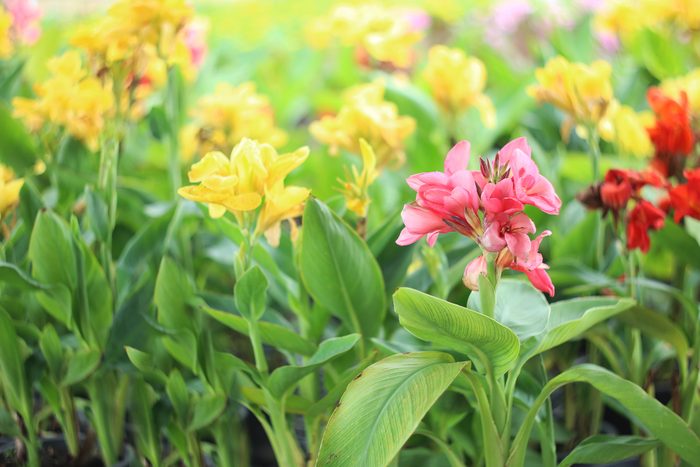
Canna Lilies
If there’s a spot in your landscape that’s bare or too monotonous, try planting a few canna lilies there. These large, tropical plants grow quickly to fill several feet of space. Their broad, paddle-shaped leaves come in shades of green, deep purple and colorfully variegated forms, gathered together in an upright clump which grows about three feet tall.
Thick stalks carrying fanciful pink, red, orange or yellow blossoms rise up well above the foliage from midsummer to frost. Hummingbirds and pollinating bees enjoy canna lily flowers If left to form seed pods, songbirds will peck away at them. It’s a delight to watch these garden visitors enjoying your canna flowers.
Plant canna lilies in a minimum of four hours of direct sun and water them well. These sizable plants need lots of moisture. In USDA Zones 6 and colder, lift their tubers in late fall and store a cool, dry place for winter. Then replant them the following spring.
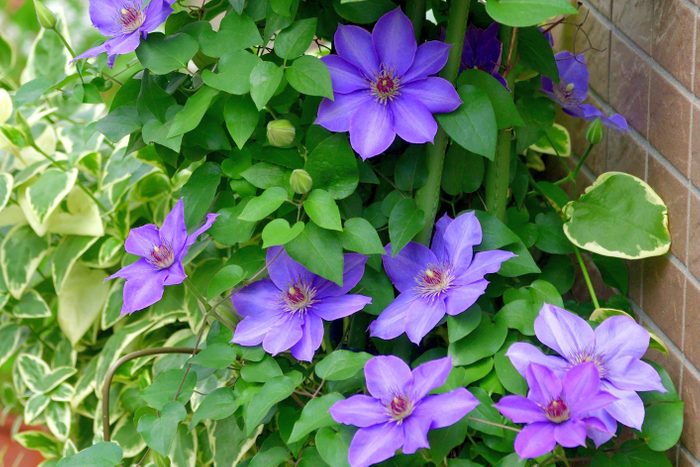
Clematis
Planting a new flowering vine quickly livens up your garden for summer. It can be as simple as adding an obelisk in an existing garden bed and planting a four- to six- foot-tall clematis at its base.
You’ll enjoy watching its progress as it winds upward and bursts into bloom by early summer. Look for repeat flowering cultivars like Crystal Fountain or Viva Polonia to extend the season of interest into late summer.
When you plant your clematis, spray the lower half of the plant with a rabbit repellent like Liquid Fence. Abundant sunshine and ample water are also important to keep clematis happy and in bloom. Clematis cultivars’ hardiness tends to vary, so make sure the one you choose is cold hardy for your USDA zone. Make sure you take a look at our collection of different types of flowering trees.
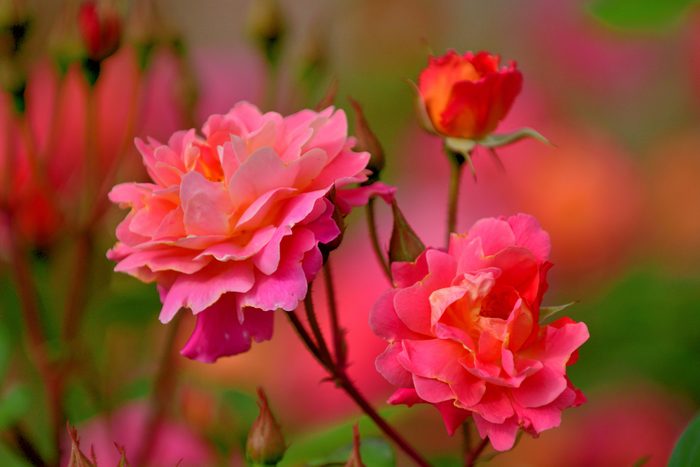
Fragrant Easy-Care Roses
Fragrance has made a comeback in today’s modern hybrid roses. For decades, scent was often absent from rose introductions as breeders focused more on preventing disease. Lately, rose hybridizers have been working hard to breed fragrance back. Look for Reminiscent, Brindabella and Parfuma roses, which all combine intense fragrance with modern disease resistance. Here’s our list of the best fragrance flowers.
Modern hybrid roses are as easy to care for as any other shrubs. Plant them in a sunny spot and enjoy their non-stop blooms throughout the summer. Pruning is best done in spring as the new leaves emerge. Check the cold hardiness before you buy, as it can vary by cultivar.
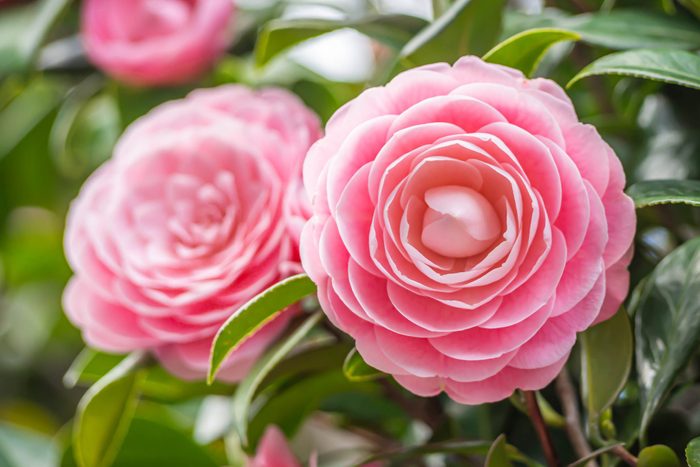
Camellias
Brighten up a shaded part of your landscape with spring- or fall-blooming camellias. They’ll grow beautifully on the north side of your home, where your roofline casts the shade rather than large trees.
These stately broadleaf evergreen flowering shrubs produce such perfect, symmetrical blossoms you might question whether they’re real. Pick a few to enjoy floating in a shallow bowl at home.
Not all climates are suitable for camellias. They require acidic, well-drained soil, dappled shade and frequent watering as young plants. Sasanqua camellias tend to be more cold hardy and durable in landscapes than Japanese camellia species. Most are hardy in USDA Zones 7 through 9 and grow from six to 15 feet tall. Thankfully, deer aren’t fans of camellias.
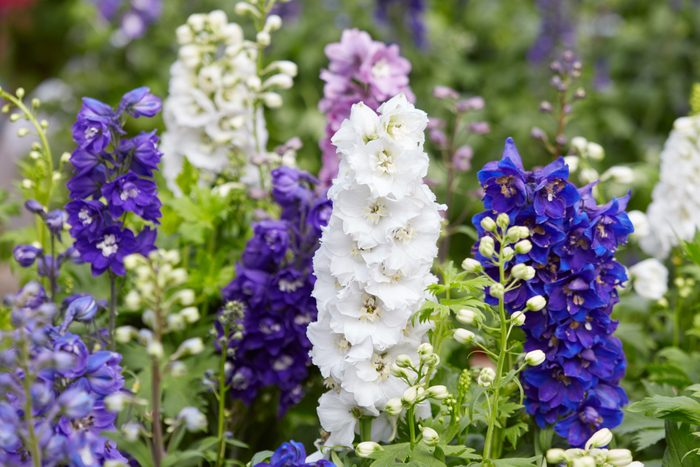
Delphiniums
For more than 400 years, delphiniums have been cultivated for cottage gardens, cut flower production and general enjoyment. They’re as striking today as ever, with their tall, stately stalks lined with frilly, true blue, indigo, royal purple, pink or white blooms.
Use them as vertical exclamation points in any sunny to partly sunny garden in USDA Zones 3 through 7, mixed among other perennials and shrubs. They’ll bloom in early summer and again in early fall if you’re lucky.
You can often find seed-grown delphinium starts in small pots at nurseries early in the springtime. Or wait until late spring and purchase larger specimens blooming in two-gallon containers. These are short-lived perennials which usually prosper for only two or three years. Once you see them in full bloom, it will be obvious why they’re worth replanting.
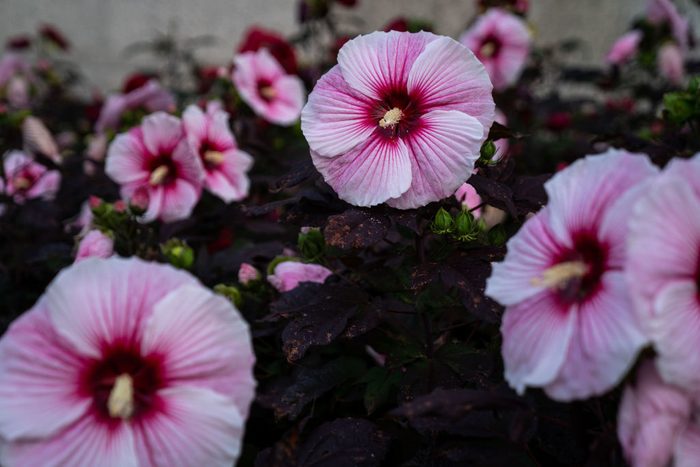
Rose Mallow
Some of the largest, flashiest flowers in the perennial world are rose mallow, aka perennial hibiscus. You’ll only need one because it matures rapidly and takes up at least four feet in your landscape.
New flowers the size of dinner plates pop open every day from midsummer to early fall, each bloom lasting just 24 hours but making the most of every minute. Cultivars with dramatically dark foliage, like the one shown here, are a focal point even before they bloom.
Rose mallow needs lots and lots of water. These are not plants for arid climates. Some species can live in shallow water. You’ll It takes plentiful sunshine for dark-foliage varieties to develop the purple pigments in their leaves. All bloom best when planted in at least six hours of direct sun in USDA Zones 4 through 9.

Panicle Hydrangeas
Close out the season with a bang by growing panicle hydrangeas. These late bloomers light up the landscape in mid to late summer with their large, cone-shaped, creamy white flowers.
When cooler temperatures arrive, they blush with shades of rouge red and rose from the bottom of the panicle to the top. You’ll find a cultivar sized just right for any part of your garden. Varieties range from two to eight feet tall.
Panicle hydrangeas are one of the easiest species to grow in USDA Zones 3 through 8. They don’t require acidic soil or consistent moisture like their hydrangea cousins, but they do grow better in well-drained soil.
These are the most sun tolerant hydrangeas. They perform beautifully in full sun as far south as USDA Zone 7, but also grow and bloom well in partial shade. Prune them back by one-third in early spring to create a well-rounded canopy.
